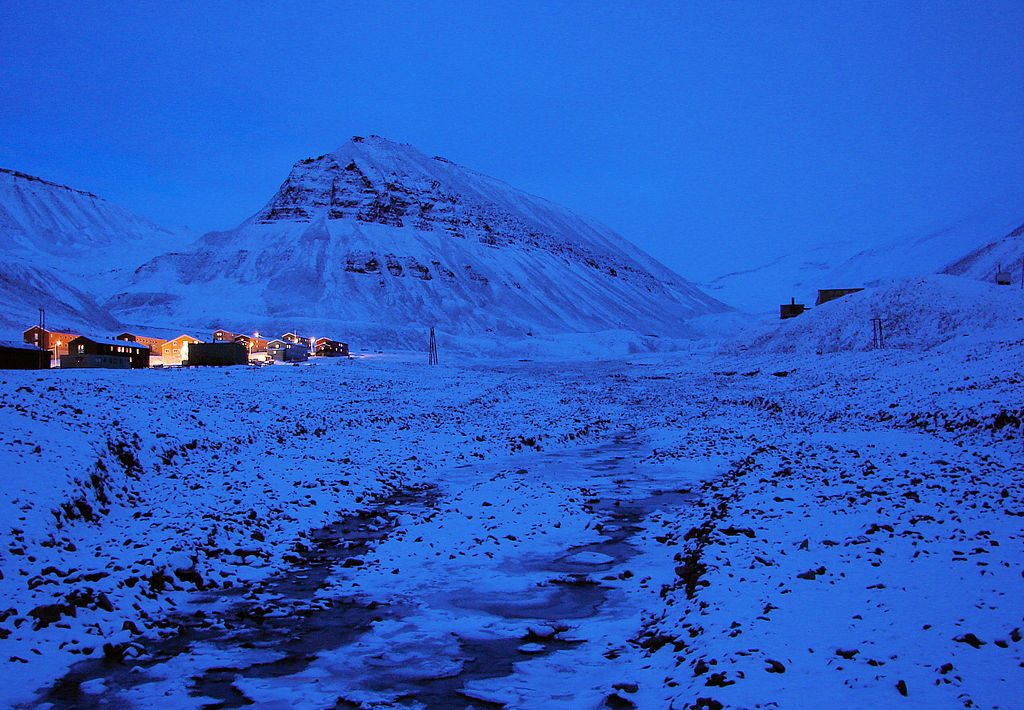Reindeer May Not Be Able to Fly, But They Do Have Ultraviolet Vision

What do those eyes really see? (Photo: Alexandre Buisse/WikiCommons CC BY-SA 3.0)
Glen Jeffery started getting curious when people started sending him reindeer eyeballs.
The eyeballs were being sent to Jeffery, a professor of neuroscience at the University College London Institute of Ophthalmology, by a researcher in Tromsø University’s department of Arctic Biology who wanted his input. When he examined the eyes, Jeffery saw that the ones belonging to reindeer killed in summer were profoundly different from those belonging to reindeer killed in winter. Those killed in summer had a golden reflection at the back while those killed in winter had a deep blue reflection. The color of the reflection will have a profound influence on the animal’s vision.

He was suddenly hooked. The research community had long been interested in how animals cope with long periods of extended darkness in winter compared to extended light in summer, but it wasn’t until that moment that the subject grabbed Jeffery’s attention.
Over the past seven or eight years since those initial eyeballs, Jeffery has taken annual mid-summer and mid-winter trips up to the Arctic. He and a group of researchers began with reindeer and then looked at hooded seals; most recently, Jeffery’s team put out a call for the eyes of polar bears, which are occasionally shot on Svalbard, an archipelago between Norway and the North Pole. With each of these animals, the team is looking at the reflective surface at the back of their eyes to examine how they perceive ultraviolet (UV) light.

Winter in Norway means living in a deep, deep blue for 24 hours a day. (Photo: Bjørn Christian Tørrissen/WikiCommons CC BY-SA 3.0)
Having ultraviolet vision means that an animal’s eyes can pick up on shorter wavelengths of light, measured in nanometers, and are thus sensitive to a greater proportion of light in the atmosphere. Ultraviolet wavelengths go beyond the boundaries of the so-called visible spectrum of colors—the red through violet that are visible to humans.
This means that during those deep winter months, reindeer eyes are capturing light that we humans can’t see. Jeffery’s team of researchers discovered that a reindeer’s ability to see UV light, which greater enables it to spot food and predators, is crucial to its survival in the Arctic. Because lichen, fur, and urine all absorb UV light, to a reindeer they appear black, contrasting rather than blending in with the snow.
Seals are also sensitive to UV light because they spend most of their time down in deep oceanic waters. “A seal is not going to let one photon of light get away, irrespective of its wavelength,” says Jeffery. The ability to see UV also comes in handy at the water’s surface. While a polar bear on an ice sheet to us may just look like white on white, to a seal, it’s probably a predatory mass of deep grey.

A reindeer hangs out in the snow. (Photo: Manfred Werner/WikiCommons CC BY-SA 3.0)
Jeffery also mentions snow blindness, which is caused by UV light burning the cornea. No mammals other than humans really seem to suffer from that, he explains, so they’re all seeing some UV at some point. However, reindeer and seals are particularly impressive.
The Arctic is most commonly defined as the area north of the Arctic Circle and includes Norway, Sweden, Finland, Russia, the United States (Alaska), Canada, and Denmark (Greenland). It’s a region of long, dark winters and short, bright summers with limited animal and human life. Jeffery’s research station is based in Tromsø, Norway, and in winter, checking out the weather from a London webcam, he really misses it.
Winter in the Arctic is peaceful and vast. “You travel for hours and hours and you don’t see a house, you don’t see a person, you don’t see anything,” he says. “It’s not in fact dark, but an incredibly deep blue, a totally saturated deep blue.” The landscape’s fragility is evident in the receding snow line, which has been creeping further back with each year.

Arctic beauty captured within our familiar visual spectrum. (Photo: Moyan Brenn/flickr)
Collecting the data for this research is not a simple task. The experiments involve giving the animal an anesthetic and then putting a little piece of gold foil onto its eye to record what type of light the eye is responding to. More specifically, they use what’s called an ERG, or electroretinography, to record the retina’s electrical response to light.
Though the process is painless and involves a quick recovery, reindeer and seals, both used to extreme environments, tend to have extreme reactions to anesthetization. Reindeer overheat under anesthesia, so researchers pack them in ice when taking recordings; also, because reindeer burp all the time due to the fermenting grass inside their stomachs, their stomachs have to be vented if they begin to blow up. As for seals, they go into a dive response when stressed and close down a lot of the organs in their bodies. When that happens, the vet doing the anesthetics instantly revives the animal. “I certainly wouldn’t want to anesthetize another seal again,” says Jeffery. “They’re big, they bite, they stink.”

This reindeer seems surprised by what it sees. (Photo: Andy Mabbett/WikiCommons CC BY-SA 3.0)
Jeffery says that primates’ loss of UV vision was a rare event in the animal world. Humans’ lack of UV vision is the exception rather than the norm in the animal kingdom. All insects see UV; their visual range is shifted downwards so they tend not to see deep reds, but they see deep into the blues and UVs, which they use to discriminate between flowers with different types of pollen contents. Birds are categorized as either violet-sensitive or ultraviolet-sensitive, which can benefit them in their foraging and courtship.
But humans don’t see UV, even though vision is our main sensory modality. Our eyes rarely pick up light at wavelengths shorter than 400 nanometers, but they don’t need to, says Jeffery; the human species uses vision intelligently, for more than just avoiding predators and finding food. Human eyes are capable of perceiving ultraviolet light, though only when the lens is removed. But depending on what you’re looking at, that might not be as exciting as it sounds. When Jeffery and several colleagues got UV cameras, sat down, and looked at them in their office, Jeffery says their first reaction was: “Oh, bloody hell, it doesn’t look any different.”
And it doesn’t, if you’re doing human things like reading a book or playing Candy Crush. But for creatures like reindeer and seals, that extra bit of super-powered vision could mean the difference between life and death.















Follow us on Twitter to get the latest on the world's hidden wonders.
Like us on Facebook to get the latest on the world's hidden wonders.
Follow us on Twitter Like us on Facebook